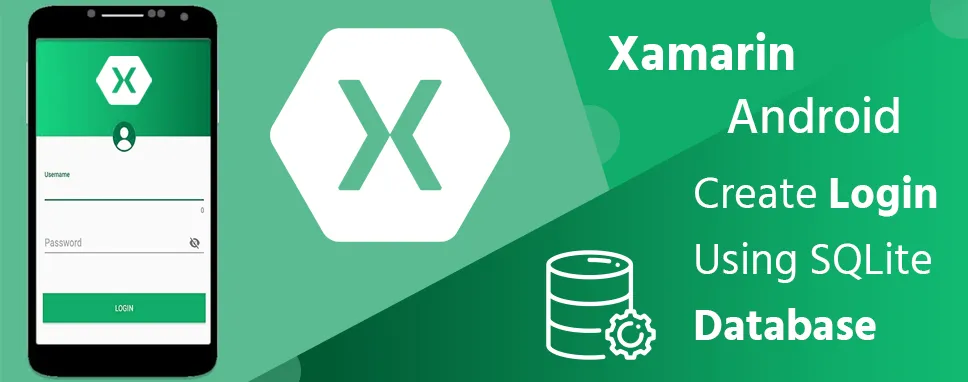How to Do Forecasting in Power BI (Steps & Accuracy Metrics)
Remember our last guide - Power BI forecasting? It revealed things that truly blocks accuracy, both structural and situational. Now it's time to take the next step. Knowing Power...
Listening is fun too.
Straighten your back and cherish with coffee - PLAY !

Xamarin is an open-source platform for creating modern and performance applications with .NET for iOS, Android, and Windows. This pattern allows developers to write all of their business logic in one language (or reuse existing application code) but achieve original performance, look and feel on each platform.
Android SQLite is the most preferred way to store data for Android applications. For many applications, SQLite is the backbone of applications whether used directly or by a third-party wrapper. We will create it today using the Android SQLite database.
It is embedded in Android By default. Therefore, no database setup or administrative work is required.
Now let's go step by step how to create a login form in Xamarin Android
We will create this project in Visual Studio 2019, so you too should try to use the latest versions.
From this, you can select whatever you want. All are templates. We only need a single page so we will select a single view app.If you need navigation you can also select the second option navigation drawer which will provide you navigation.
If you need a tab menu, you can also select the third option Tabbed App which will provide you a tab menu.
If you need a blank page then select the last option which will be a blank page.Select a low level whenever possible in the minimum Android version as doing so will help you run in Low device.
Then click on OK
Now our project is ready as a normal template. Now we will add layout, NuGet package, required class, and interface.
Next, go to Solution Explorer-> Project Name (SQLite) ->Resources Folder ->layout Folder. Right-click on Add -> Add item. A new dialog box will open. Select Android the layout, give a name for NewUser.xml and click Add buttonas shown in the image.
Now new Layout Page ready for Design.We will write our design code in this file.
Now we will add an Activity class to our project in which we will write the Register Related Business Logic code.
Go to Solution Explorer-> Project Name (SQLite).Right-click on Add -> Add item. Open new a dialog boxas shown in the image. Select Activity and give name for RegisterActivity.cs. Now, add the New Activity Class.
Next, we need to create a database table, so we create a data layer class in the file, we will write the code to do the table, such as id, name, password, etc.
Go to Solution Explorer-> Project Name (SQLite).Right-click to Add -> Add item. Open a new dialog boxas shown in the image. Select Class, give a name for LoginTable.cs
Once the NuGet window opens, click on Browser from the above tab and search for SQLite package and install packages.
This package will help us to connect with the database as well as provide the required methodology.
Next, Go to Solution Explorer open the LoginTable.cs file, and put the below code.
namespace SQLite
{
classLoginTab
{
[PrimaryKey, AutoIncrement]
publicint id { get; set; }
[MaxLength(50)] // Maxlength set in UserName column
publicstringuserName{ get; set; }
[MaxLength(20)] // Maxlength set in passWord column
publicstringpassWord{ get; set; }
}
}
Next, Go to Solution Explorer open the MainActivity.cs file, and put the below code.
namespace SQLite
{
publicclassMainActivity :AppCompatActivity
{
EditTextuserName;
EditText Password;
Button ncreate;
Button nsign;
protectedoverridevoidOnCreate(Bundle savedInstanceState)
{
base.OnCreate(savedInstanceState);
Xamarin.Essentials.Platform.Init(this, savedInstanceState);
SetContentView(Resource.Layout.activity_main);
Android.Support.V7.Widget.Toolbar toolbar = FindViewById(Resource.Id.toolbar);
SetSupportActionBar(toolbar);
FloatingActionButton fab = FindViewById(Resource.Id.fab);
fab.Click += FabOnClick;
base.OnCreate(savedInstanceState);
SetContentView(Resource.Layout.Main);
btnsign = FindViewById
Next, Go to Solution Explorer open the RegisterActivity.cs file, and put the below code.
namespace SQLite
{
EditTextusername;
EditTexttxtPassword;
Button ncreate;
[Activity(Label = "RegisterActivity")]
publicclassRegisterActivity : Activity
{
protectedoverridevoidOnCreate(Bundle savedInstanceState)
{
base.OnCreate(savedInstanceState);
SetContentView(Resource.Layout.Newuser);
btncreate = FindViewById
In this blog, we have created a login form for an Android OS using SQLite database.We tried to explain you the step by step method where we can create a normal login form using class, method, interface, database, and package.

Remember our last guide - Power BI forecasting? It revealed things that truly blocks accuracy, both structural and situational. Now it's time to take the next step. Knowing Power...

Did you know that 70% of CTOs (Chief Technology Officers) hesitate to adopt Microsoft Power BI because of its myths and misconceptions that float around. What they fail to see is...

Every CTO knows the struggle of managing complex reports. The inefficiency of scattered data, the constant juggling between reporting tools, the challenge of ensuring accurate KPIs...